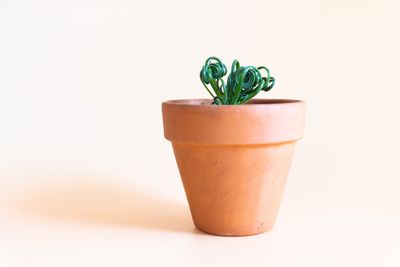Albuca Spiral Plant Info
Albuca is a genus of over 100 types of plants, most of which originated in South Africa. Albuca spiralis are also known as frizzle sizzle plants and corkscrew Albuca. The unusual foliage actually grows in a spring shape and coils up from the bulb with unique eye appeal. The bulb requires a cooling period to produce foliage and finally the flowers, so indoor plants can be challenging to grow. Albuca spiral grass plants are fussy about drainage and water needs, which means spiral grass plant care can be a challenge for those of us without green thumbs. Albuca spiralis is hardy to United States Department of Agriculture zones 8 to 10. The plant requires a minimum temperature of 60 degrees Fahrenheit (15 C.) but will perform best in warmer temperatures during its growing season. The active growing season is winter when there is abundant moisture. When the dry summer arrives, the plant will die back. In spring, it produces numerous yellow-green nodding flowers that are said to smell of butter and vanilla. The attractive, slender curling leaves are affected by the amount of sun and water they receive. Low light conditions may produce less twisting in the leaves.
Spiral Grass Plant Care
Spiral grass grows naturally in scrublands, open woodlands and dry grasslands. It is a prolific plant in its native region but only just getting known in Europe and the United States. Because it is so sensitive to cold, most of us will have to use it as a houseplant. Caring for spiral grass starts with a potting mix that is well draining, as excess moisture can cause the bulb and roots to rot. Place the potted bulb in a sunny area with bright but indirect light for most of the day. The water needs of this plant are especially important. Too much water promotes rot but too little will affect the foliage production and ability of the plant to flower. In late fall, begin watering the plant regularly, keeping the soil evenly moist but not soggy. Soon the first curling shoots will appear. Use a good liquid plant food diluted by half once per month until flowering. Once flowering is finished, cut off the spent blooming stem and continue to water. When temperatures heat up, you can move the plant outside or keep it indoors. Indoor plants may retain their foliage but they will look ratty. Outdoor plants will lose the foliage and go dormant. Either way, the plant will spring back in winter.
How to Grow Albuca Spiral Grass
Albucus propagation is from seed, division or bulbs. That said, it is primarily propagated through division, as seeds can be unreliable. You can more readily find the bulbs and increase your collection simply by dividing the plants every few years. If you wish to get seed, your best bet is to collect it from an existing plant. Many of the Albuca species need a partner plant to produce seed, but Albuca spiralis is an exception. Flowers can last for a couple of weeks, but will produce tiny seeds once they have been pollinated. Indoor plants can rarely be pollinated due to the absences of insects, but you can cheat a little and reliably pollinate the plants yourself. Use a cotton swab to transfer pollen from one bloom to another. Once you have seed pods, you can open them and sow the fresh seed or dry them and sow within 6 months. Plant seeds at the same time the plant emerges from its dormancy in a flat and keep moderately moist. Seeds should germinate within a week or so from planting.
